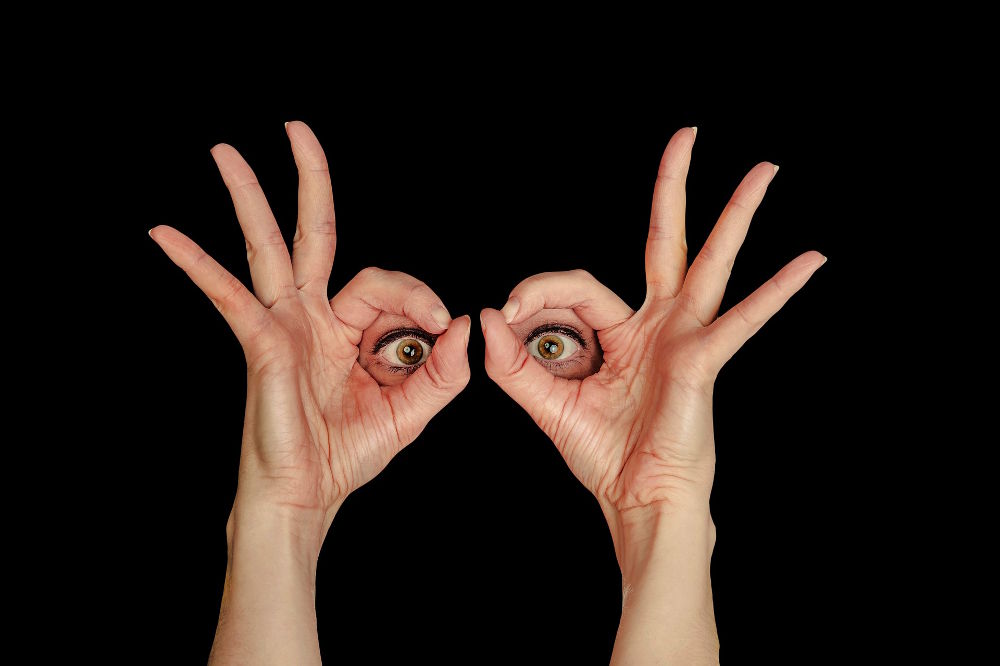 There was a famous teaching once, a long time ago – Life is suffering. But this statement is ripe for misinterpretation – was he teaching pessimism, defeat? No – for he was simply approaching the problem as a scientist, a doctor, would. This is our disease, he said. Life is suffering. What is the cause, and how do we cure it?
There was a famous teaching once, a long time ago – Life is suffering. But this statement is ripe for misinterpretation – was he teaching pessimism, defeat? No – for he was simply approaching the problem as a scientist, a doctor, would. This is our disease, he said. Life is suffering. What is the cause, and how do we cure it?
His answer was so simple I refused to believe it for a long time: the origin of suffering is attachment, desire. This teaching is marvellous, for there is nothing in there that cannot be verified simply by looking into your own experience. Look deeply into your own life, the times you have cried, the times you have raged. What was the cause of it all? The next time you are in pain, pause, and look. Ask yourself – why? What am I holding on to?
Without attachment, suffering does not exist. Let go of your attachments, little by little. By and by you will see the freedom, the happiness that is there.
The Misinterpretations
Yet say this to a typical man on the street, and he might answer you with scorn and disbelief. I was at a meeting once, where the speaker touched on this topic. Immediately a man rose from the audience, indignant and full of derisive laughter.
What nonsense! A beggar has nothing to be attached to, and I have yet to see one that is full of happiness! If that was true, they would all be dancing for joy! I’m going to throw away all my money now, and yes! I will be happy!
With that, he left the room, muttering under his breath. The speaker began to explain her statement, but he was not there to hear it. One might consider his response extreme, but please check within – his reaction, in many ways, reflects the disbelief in all of us.
We have spent so much of our lives, every waking moment, following desire. We expend huge amounts of energy and time; we make extreme sacrifices, in the hope of finding happiness by attaining them. But as Lorne Ladner says in The Lost Art of Compassion, rarely does it occur to us the very way we go about seeking happiness has been causing our problems.
And that is the aim of this series – to expand on that statement, to uncover the root of all our unskilful behaviours and pain. This post will prepare us by introducing attachment and uncovering our own. The future posts will touch on desire – and what to do with them.
The Impermanency of Things
The first thing we have to realise: this world is always impermanent, transient. Physical objects come into existence, and fade away. Bodies, cars, buildings, even the mightiest mountains will all disappear one day. And mental concepts are even more fragile – social status, intellectual achievements, and fame – what real permanency will there be? Even the greatest man is just a page in a history book.
But that is not to say: do not treasure them. This is not to say: discard them, mangle them, and abuse them. But simply refuse to find yourself in them; refuse to identify with them; base your self-worth on them. Play with them, enjoy them, nurture them – but realise that one day they will have to go.
If you have become attached to your strength and health, if you rely on your beauty to feel good about yourself, what will happen when your hair begins to turn silver, when your skin begins to sag? If you base your worth on the size of your mansion, the amount of money in the bank, what will happen the day it crumbles? What if you base your life on your lover – that special woman, the man you swear you will die without – what will happen when they move on, or pass away?
 Projections of Our Needs
Projections of Our Needs
The second thing: when we become attached to something or someone, we do not see it or them as they are. Often, all we see are our projections. We see them for what we think they can provide, or more accurately, what we think we lack. Through a mansion, we seek the respect we feel we lack. Through wealth, we seek security. By finding a lover, or by having endless sex, we think we have love and attention.
But a mansion is just a mansion, money just money. They only have the value we give them, and very so often, we project on to them a false and disproportionate importance. This is even worse when we project our needs on human beings – no longer do we treat them as human beings, but as objects to be used.
And yet explore this for yourself – can the material world give you any of these? Simply pause, and think of the last time you got something you really wanted – good food, good sex, a promotion, or the recognition of your peers. How did you feel? If you felt good, how long did it last for? If these things really filled up a hole inside you, how much more would you need? Wouldn’t the hole have been filled long ago?
The answer might be tricky to see, because of one simple fact – what we crave changes. As a child, it might have been the latest toy. As we grew older, we might have wanted the best clothes, coolest haircut, the hottest boyfriend or girlfriend. As an adult, it might be the biggest mansion, the most loving family, the flashiest car, respect or recognition. If any of these provided satisfaction beyond a temporary relief, we would have been satiated long ago.
The Value of Looking Deeply
The point of this exercise is simply to come to realisation that the content of the wanting will never satisfy you. It is the wanting, the attachment itself, that is causing the trouble.
Yet an intellectual understanding is not enough. I gained an intellectual understanding of this a year ago, and yet subtly I continued my endless search. Please do not cheat yourself out of this exercise – a true understanding, one from the heart and not from the mind, is required. Please continue this inquiry, however long it might take, until you see for yourself how it is the desire itself that is causing your discontent. Or you might eventually decide otherwise; that is also fine. Honour your own experience.
If you come to the same conclusion, it is possible for our attachments to fall away on their own. But if they don’t, then at the least, we will develop a willingness to let go of them – the methods for which will be covered in the rest of the series.
 Pleasure and Enjoyment
Pleasure and Enjoyment
There is a common outcry at this point that needs to be addressed: does letting go of our attachments mean we sacrifice our happiness? Do we turn into lifeless, emotionless shells, or do we retreat and live in a mountain?
On the contrary! Attachment and detachment is internal – one could easily give up all her wealth and still be upset because she is still attached to them internally. In the same way, one could have all the wealth in the world and enjoy it immensely without any attachment.
True detachment, not a melancholic surrender, allows us to truly savour the moment. It allows us to play with and enjoy what we have. Knowing it will soon pass allows us to enjoy each moment, come what may.
Just an example – when you are not attached to your lover, there is no fear of loss when you hold them in your arms. When you do not rely on them to feel safe or to feel loved, there is no anxiety when they are away. When you do not seek to find yourself in them, you allow them to be just as they are. The mind games fade away, the manipulations drop – and the feeling gets deeper, and deeper, more genuine.
Try it for yourself, and see if it is not true of any attachment.
 Expanding Awareness
Expanding Awareness
The third point: for many, the idea of attachment ends with our material possessions. But attachment is so much more; we are attached to everything in our perception. We cling to our ideas; we cling to sensual pleasures and sensations.
How many of us have gotten into an argument over an idea, a symbol, a concept? In A New Earth, Tolle used a simple example: Light is faster than sound. It is a simple statement of fact, and the light does not care what we think. But how many of us argue over ideas such as these? Which phone is better, which celebrity is more beautiful, which chocolate is tastier? What would happen if we win? A momentary, egoic, feeling of satisfaction. And when that passes, what are we left with? What have we expended to get that?
On a similar note, how many of us cling to our moments of happiness, and run away from the sadness? Moments of happiness will always end, sadness will always be a part of life. Others even do the opposite, and take identity in our misery.
Aversion is Attachment
It is important to note that many forms of attachment are deceptive. We don’t realise another simple truth: aversion is attachment. The more we hate something, the more we cling to it. This is not to say that we should not protect ourselves, or remove ourselves from someone who is causing us harm. But look into your internal world – is this not true?
Is there anyone you hate with a passion? How often do thoughts of them, or fantasies of revenge, enter your mind?
How about your feelings – when you get angry, or sad, do you force it down? Do you deny yourself these feelings; do you contract and harden up internally? Is that not a form of attachment to your suffering? What if you were simply to accept them, without acting on them? They dissipate almost immediately.
The Self
And so this begins to carry across to the biggest attachments and aversions of all – a false self-image. When someone calls you a name, when someone spits at your feet, what has been hurt?
We’ve spoken of how light is faster than sound. And yet there is nothing to fight over, for when we do, we are merely fighting over mental concepts. And yet consider this – perhaps who the mind thinks you are, is simply another mental concept, a mere idea of “you”, that you have mistaken for yourself. When someone calls you stupid, weak, insignificant, look into it – what has been hurt?
Is it possible that it is merely an image that has been challenged, that our anger arises from an attachment to a mental concept? Is it possible a self-image is just that – an image?
It is the same with those who hate themselves. What are they hating? What is the core of low self-esteem? Hatred for an image, a thought.
It is important to note the difference between cherishing ourselves, and cherishing a self-image – a subtle but important distinction; for some will misinterpret this as saying we should not protect ourselves when threatened.
Further Reading: The Beauty of Impermanency and The Illusion of the Ego
 An Investigation
An Investigation
Understanding is the first step to change, and this post is the start of a series that examines attachment and craving. It will eventually lead on to the behavioural mastery series, where we begin to examine solid practical steps to change.
Armed with this knowledge, you could begin to see where your own attachments are. Please try the following – and the investigation on attachment given above – as homework, and if you wish, share your results in the comments.
Analyse everything you indulge in – positive or negative. What does your partner mean to you? What do all the important people in your life represent? Who are you averse to, or attached to? What are you averse to, or attached to?
What does all your cravings, and pleasures, mean to you? What do you spend a lot of your time doing? Perhaps you are addicted to chocolate, sex, or even the internet. What do you fantasise about a lot – happy or unhappy? What takes up most of your mental space? Do you spend a lot of time on your appearance, your career, or your car? Bring awareness to all these, write them down for yourself.
What are the behaviours that you would like to change? Do you say yes when you mean no? Do you smile to gain approval? Are you addicted to anything? Do you shout and rage? Do you spend too much time watching television, or feeling sorry for yourself?
You’ll notice that these questions begin to lead into the mundane – following celebrity gossip, watching television, or taking pride in your appearance, for instance. There is nothing wrong with any of that – but for some, the driving forces behind these behaviours reveal something much more painful.
Discontent with your own life, for instance, can lead to an obsession with a glamorous Hollywood lifestyle, living vicariously through the exploits of the stars. Looking at how a famous person has ruined his or her life can provide a temporary relief for how much we hate our own. Obsession with appearance can come from a low self-esteem, thinking that our looks are the only things we can offer the world. It might come from an attachment to being considered handsome. And on the list goes. Be penetrating with your inquiry – the more you put into it, the more you will get out of it.
Source: The Urban Monk















